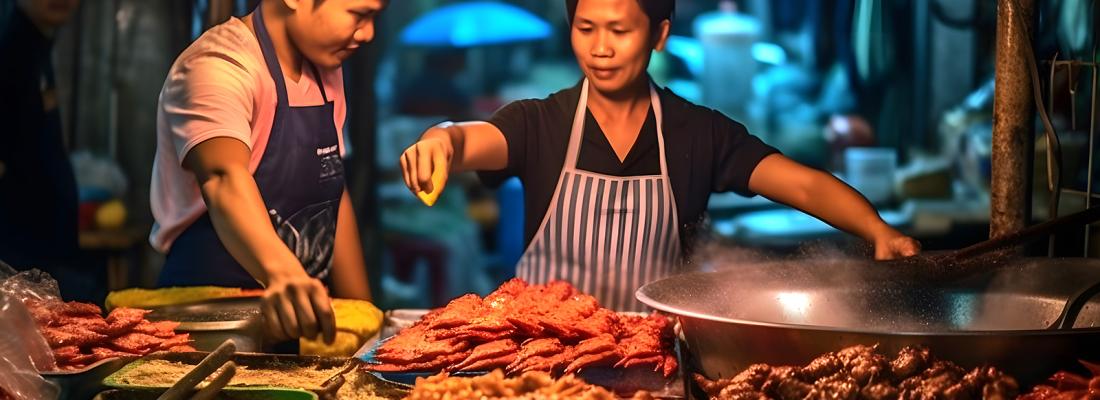Food, Global Health Reading time 4 min
An ERC Starting Grant to track avian influenza viruses in live bird market networks
Published on 05 September 2023


The ERC programme funds exploratory research with a criteria of scientific excellence. It aims to allow researchers to identify new opportunities in any field of research, while recognising the status and visibility of Europe's brightest minds. The ultimate goal of the ERC is to build a European research prepared to respond to the needs of a knowledge-based society and to provide frontier research necessary to meet global challenges. Discover our other grantees
Live bird markets, a cultural specificity in South-East Asia
Live bird markets in South East Asia are a world apart from the conventional poultry production systems found in Europe. While in Europe, poultry undergo a short cycle from farm to fork through slaughterhouses, in South-East Asia, poultry go through a much more intricate trade network via live bird markets. These markets, whether open-air or enclosed, are characterised by high density and a mix of different bird species with limited biosecurity level. They are a strong cultural tradition in South-East Asia, where consumers personally select live birds, paying close attention to their appearance and health, before having them prepared on-site.
“This traditional practice comes with unique challenges. This is a complex network, in which poultry are transported across multiple markets by traders before being slaughtered, providing a perfect ecosystem for the maintenance and emergence of new AIV strains. This is the reason why we are going to study the whole network of markets”, Claire Guinat
Cambodia, a key study location
Extensive field study will be set up during the first two years of the project in Cambodia, during which she aims to collect crucial data needed to unravel the transmission dynamics of the virus.
Why Cambodia?
Recent surveillance studies have shown the highest rates of AIV detection in Cambodia, with 30-50% of ducks and 20-40% of chickens testing positive. There are significant levels of co-circulation of several virus strains. Human cases have been consistently reported, indicating an ongoing and persistent zoonotic threat. Finally, resources to control the virus spread are limited in the country, making the structuration of research and controls essential.
“We will conduct field work activities during the traditional festivals which have been identified as high-risk periods for virus circulation, interviewing poultry traders and sampling birds to find out how the virus spreads in this complex network. We will start with the largest markets and gradually explore the entire network. This will be hard work, it’s challenging but very exciting at the same time”, explains Claire Guinat. The project will be conducted in close collaboration with Institut Pasteur du Cambodge (IPC), which is already carrying out active surveillance for AIV at markets there.
Knowledge, tools and going beyond Cambodia
By decoding the transmission mechanisms of AIV, the TrackFLU project aims to pro-actively inform key stakeholders, including local authorities and veterinary services, about optimized and evidence-based strategies for virus control in the country.
TrackFLU created a user-friendly web application for predicting AIV transmission in these market networks. Throughout the project, the tool will be shared with key stakeholders via science-to-policy workshops in Cambodia and potentially extended to other Southeast Asian countries. Stakeholders will have access to this tool to simulate the virus spread based on chosen strategies and identify those that are the most optimised for virus control. This collaborative approach aims to adapt the findings to local contexts and inspire future research endeavors.
Generating knowledge through interdiciplinary approach
While prior studies have looked at the AIV transmission dynamics, the current models to support policy-making for virus control have certain limitations. Claire’s project aims to bridge these gaps. “What's really missing is the lack of information on the virus transmission dynamics within and between markets, that’s where virus genetic sequences and phylodynamic tools become useful. Virus genome sequences from circulating strains are the footprint of past transmission events. From them, we can extract key epidemiological insights and get a better idea of how the virus spread along the major trading chains over time” she says.
With this integrated research approach, combining field data and interdisciplinary knowledge, Claire aims to pave the way for scientific progress, inspiring future research and development within the broader scientific community.
About Claire Guinat

Claire graduated from the National Veterinary School of Toulouse (ENVT) in 2012. She completed her PhD in veterinary epidemiology at the Royal Veterinary College and The Pirbright Institute (UK) in 2016. After her PhD, Claire completed a 4-year postdoc fellowship at ENVT/INRAE, for which she was awarded the PRESTIGE grant. In 2020, she joined the Computational Evolution (cEvo) group at ETH Zurich (Switzerland) with a Marie-Curie Individual Fellowship.
Since the start of her PhD, her research activities have been focusing on investigating the transmission dynamics of zoonotic and animal infectious diseases with the objective to improve our ability to predict and control future outbreaks. In 2022, Claire Guinat became a permanent research scientist at INRAE, joining the Epidemiology and Decision-making in Animal Heath (Epidesa) group of the Host-Pathogens Interactions (IHAP) unit.
“My current research project combines pathogen genome sequences and case surveillance data to reconstruct epidemics and identify determinants of spread. The Epidesa group within the IHAP unit has a strong expertise in disease modelling and epidemiology of animal infectious diseases, which closely aligns with the trajectory of my current research project”, she says.
Beyond her research, Claire is also a member of the scientific working group for the Preventing Zoonotic Disease Emergence (PREZODE) international initiative which places research on animal, human and environmental health at the forefront of the global efforts to understand, prevent, monitor, and early detect zoonotic pandemic risks. She is also member of the expertise committee on Animal Health and Welfare (CES SABA) at ANSES and of the working group on avian influenza and vaccination at EFSA.

Coming from a broad array of fields, researchers at INRAE are collaborating to generate knowledge and inform decision-making by stakeholders on matters of public health. Interdisciplinary projects have now become the norm.
